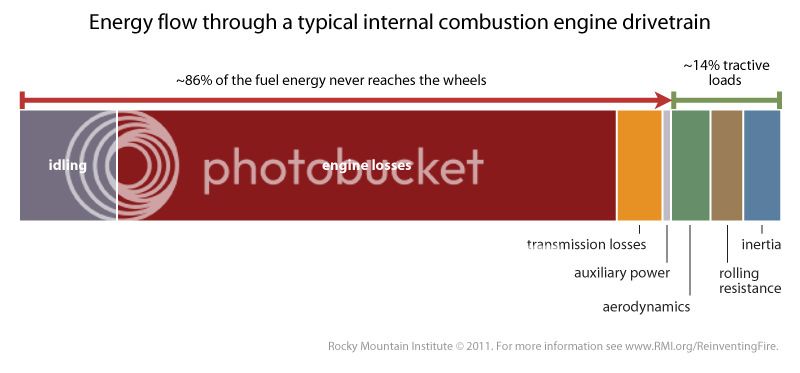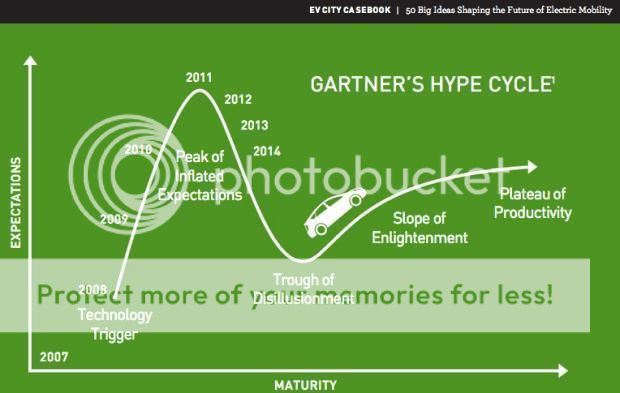Oil has served us well. There is no denying how it has powered so many extraordinary advances in human civilization. But as a former oil minister for Saudi Arabia observed in 2000, "The Stone Age came to an end, not because we had a lack of stones, and the oil age will come to an end not because we have a lack of oil."
It's time for governments—particularly the U.S. and Canadian governments—to get behind electric vehicles (EVs). The Canada-U.S. auto pact of 1965 was a major milestone, setting the stage for free trade in the 1980s and later the North American Free Trade Agreement (NAFTA). Fifty years later, it is time for a renewed vision for Canada-U.S. automotive cooperation.
Below we offer four arguments in favor of EVs and a U.S.-Canada Electric Auto Pact, followed by three actions governments should take to support accelerated deployment of EVs.
First, electric drive motors are far more efficient than internal combustion engines (ICEs). The second law of thermodynamics tells us that that some energy will be lost in any energy conversion process. By dividing the energy output from the energy input for each of electric drive motors and internal combustion engines, we can calculate their respective efficiencies. And the contrast is dramatic: electric motors powered by batteries tend to be 85 percent efficient, whereas internal combustion engines are about 30 percent (the energy loss is almost all heat). And that is not the whole story. Internal combustion engines run at 30 percent efficiency while driving, but are 0 percent efficient when idling, whereas the electric drive never idles—it turns off. Conventional hybrid vehicles improve efficiency by almost eliminating idling through regenerative breaking and by using electric drive at low speeds, but their maximum efficiency is still capped by the limits of ICEs.
Second, EVs can help support optimization of the electricity grid. Whether through batteries or fuel cells (fuel cells combine hydrogen and oxygen to produce electricity), EVs can act as storage for electricity that is produced but not needed at the time of production (often at night), and then bid resources back into the grid when required (often in the daytime). Their added storage capacity will help smooth the integration of intermittent resources like wind and solar, and enhance the use of wires that are usually loaded at less than their peak capacity. A California utility, San Diego Gas & Electric, now has a promising pilot underway along these lines.
As the Canadian Electricity Association points out in its paper Vision 2050: The Future of Canada's Electricity System:
A family could plug in their electric car to the grid to charge overnight, and then during the day, deliver solar power (from a home installation) back to the grid . . . The utility company could even potentially access the power available in their idle electric car (if the customer grants this option in advance) to meet peak demand under certain conditions, so that the vehicle also acts as a form of electricity storage. Together these represent a completely different way to think about electricity flows.
Third, optimized grids, as supported in part by electric vehicles, offer one other benefit: they will help strengthen grid reliability and resilience. In the Northeastern United States, as a result of Hurricane Sandy, micro-grids—grids that can operate autonomously—are being developed to ensure that core emergency response services will be available even in the event of catastrophic loss of the grid.
Lastly, if we are to have any hope of mitigating climate change, we will need to accelerate dramatic reductions in carbon emissions. Since electric vehicles will reduce overall energy consumption in our economy as well as replace high-emitting sources with lower ones, electric vehicles could make a significant contribution to this effort.
In the North American context, the average Canadian electron is cleaner than the average U.S. one. In the United States, roughly 67 percent of electricity is generated from fossil fuels (coal, natural gas, and petroleum); in Canada, by contrast, 79 percent of electricity is from non-emitting electricity sources—"one of the highest percentages in the world"—including more than 63 percent from hydroelectricity.
For both the United States and Canada, the carbon intensity of the electricity sector is likely to decrease over time as older, less efficient fossil resources are retired and replaced with lower-emitting resources. Yet carbon reductions from transportation can be made much easier if additional Canadian electricity, especially from abundant hydroelectric resources, is deployed for this purpose. On the generation side, demand reductions from conservation (e.g. LED lighting) could be reallocated to EVs—a repurposing of some generation capacity from the residential and commercial sectors to transportation. In addition, power utilities in Canada could develop power projects for export to the United States. Long-term power purchase agreements as part of an electric auto pact could help facilitate and underwrite such projects. On the wires side, meanwhile, the opportunity is to make full use of existing wires infrastructure by managing how and when EVs are charged.
Already Canada and the United States trade electricity back and forth as part of an integrated North American grid—an often overlooked, highly complex shared system across our borders, a system that the U.S. National Academy of Engineering has called the ". . . supreme engineering achievement of the 20th century." Our fates are already intertwined for reliability and for quality of life. A commitment to build additional clean power to meet electricity demand from the transportation sector would be a worthwhile extension of this shared achievement. There will also be a need for auto parts and charging stations as part of the new infrastructure, and manufacturing could take place in both Canada and the United States. Electric vehicles powered significantly from Canadian clean electricity could be a major carbon mitigation measure and economic stimulus for both countries at the same time.
Three Policy Measures
Global trends for EVs are encouraging: sales are increasing, and battery costs are dropping. Tesla and BMW are adding brand cachet, and Apple is rumored to be entering the game. The Electric Vehicles Initiative, a policy forum of 16 member governments including Canada and the United States, is aiming to support deployment of 20 million EVs worldwide by 2020, including hybrid and fuel cell vehicles.
Even so, an accelerated shift towards EVs will not occur without clear policy direction and support. There are three actions that governments could take in support of EVs and their broader benefits.
First, governments should support EV infrastructure. Whether through direct charging or hydrogen fueling stations (which will take electricity), EVs need to be integrated with the grid so they can store energy and optimize flows. Governments can ensure that electricity regulation facilitates integration of vehicle charging.
Second, governments can lead by example through procurement of EVs as part of the turnover of their own fleets. In 2014, a coalition of San Francisco Bay-area government agencies bought a total of 90 electric vehicles, in what was described as the "largest government fleet deployment in the United States to date." If 90 is the record so far in the United States, there is plenty of room for governments to have a larger impact through their procurement policies.
Finally, governments need to price carbon (we favor taxation), and on the flip side, reduce or eliminate support for fossil fuel exploration and production (subsidies, tax deferrals, etc.). In the language of economics, pollution of the atmosphere through carbon emissions, and the resulting threat to our planet, is a "negative externality," and a carbon price is a way of remedying this market failure, of internalizing this externality. Doing so would send a clear signal to the market and thereby spur innovation across the entire value chain of low or zero carbon technologies. The market for electric vehicles has already gone through early growing pains and achieved a stage of maturity; it is poised for growth. A carbon price would accelerate the rate at which it builds out appropriate infrastructure and achieves scale.
An Electric Auto Pact
The potential advantages of EVs are clear: efficiency gains, grid resource optimization, and large carbon reductions. Just as Canada and the United States ought to be working towards a common carbon policy, so we should develop an interconnected North American infrastructure for electric vehicles. Canada's electricity system is well-positioned to provide green electrons, while both Canada and the United States could enjoy a manufacturing boost. The Keystone oil pipeline debate in the United States and Canada is missing the point: there is a better opportunity for energy cooperation between our two countries where it makes more sense to focus our attention and resources.







